In photos: Ancient Roman fort discovered
Roman fort

Archaeology students dig at the site of a 1,900-year-old Roman fort in Gernsheim, Germany. Much of the region's Roman era history has been covered up by modern development, leaving little opportunity for excavations. This site is a vacant double lot in the midst of a residential area of Gernsheim. [Read full story]
Digging for artifacts
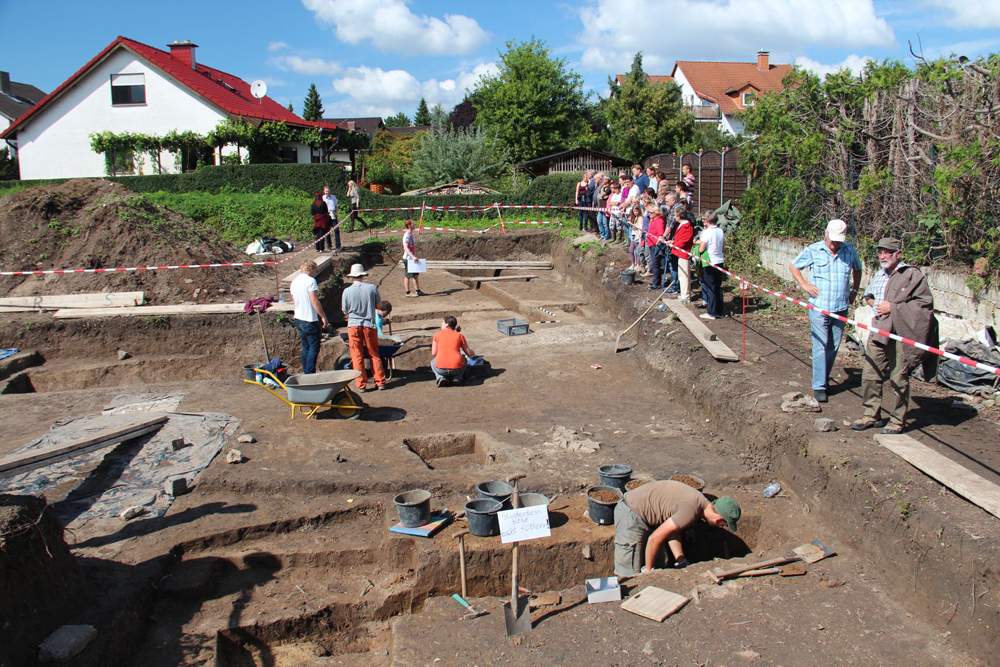
Members of the public line up on the edge of the Gernsheim site as students dig for Roman artifacts. Prior to the excavation, archaeologists knew that Gernsheim was the site of a village, thought to support a fort, during the first few centuries A.D. This is the first time that evidence of the fort itself has been found. [Read full story]
Ancient postholes
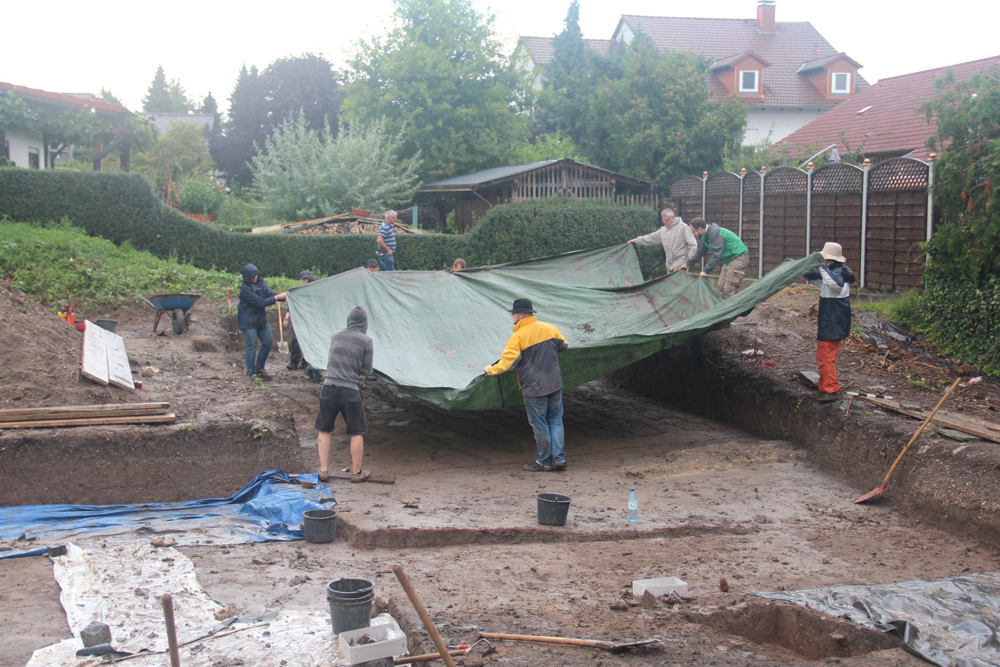
Archaeologists deploy a tarp over freshly excavated soil during a rainstorm. The researchers have discovered postholes that once supported a wooden defensive tower, as well as two v-shaped ditches filled with ceramic shards. [Read full story]
Fort ditches

One of two v-shaped ditches discovered at the site of a Roman fort in Gernsheim. The fort dates back to between about 70 A.D. and 120 A.D. These ditches were common around Roman fortifications, and were meant to dissuade attackers from approaching the fort. When the Roman soldiers abandoned the fort, they dismantled the fortifications and filled in these ditches with rubbish. [Read full story]
Dating the fort

A second segment of v-shaped ditch found in Gernsheim. Archaeologists found boxes worth of ceramic shards in the ditches, which will allow for detailed dating of the site. [Read full story]
Fort foundation
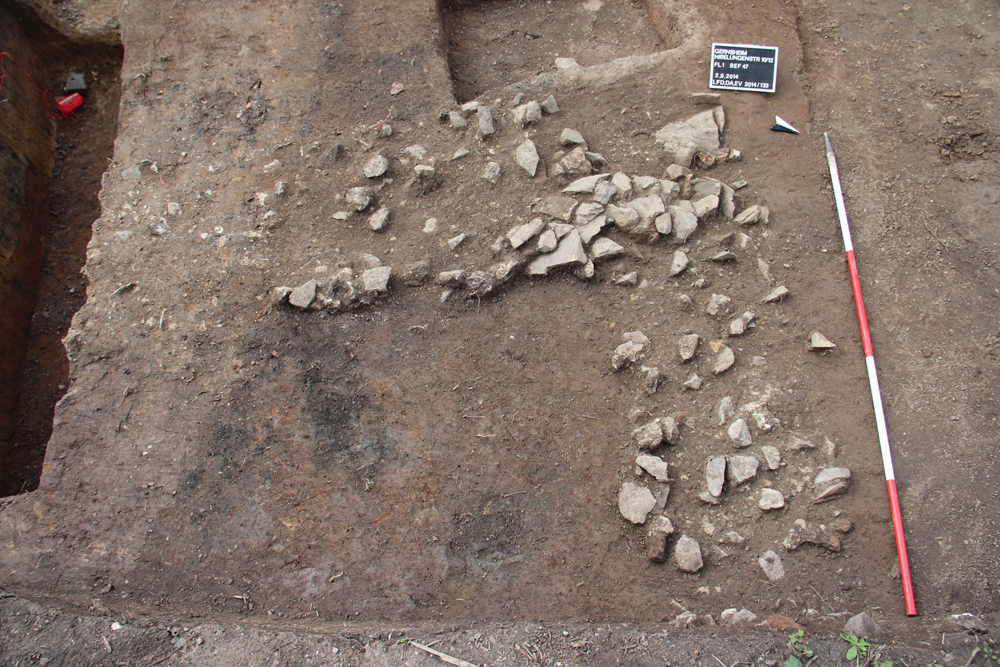
The remains of the lower foundation of a stone building found at the Gernsheim fort site. The foundation is all that remains of this building — the upper stones were likely carted off after the Romans left and reused in another building project. [Read full story]
Roman history
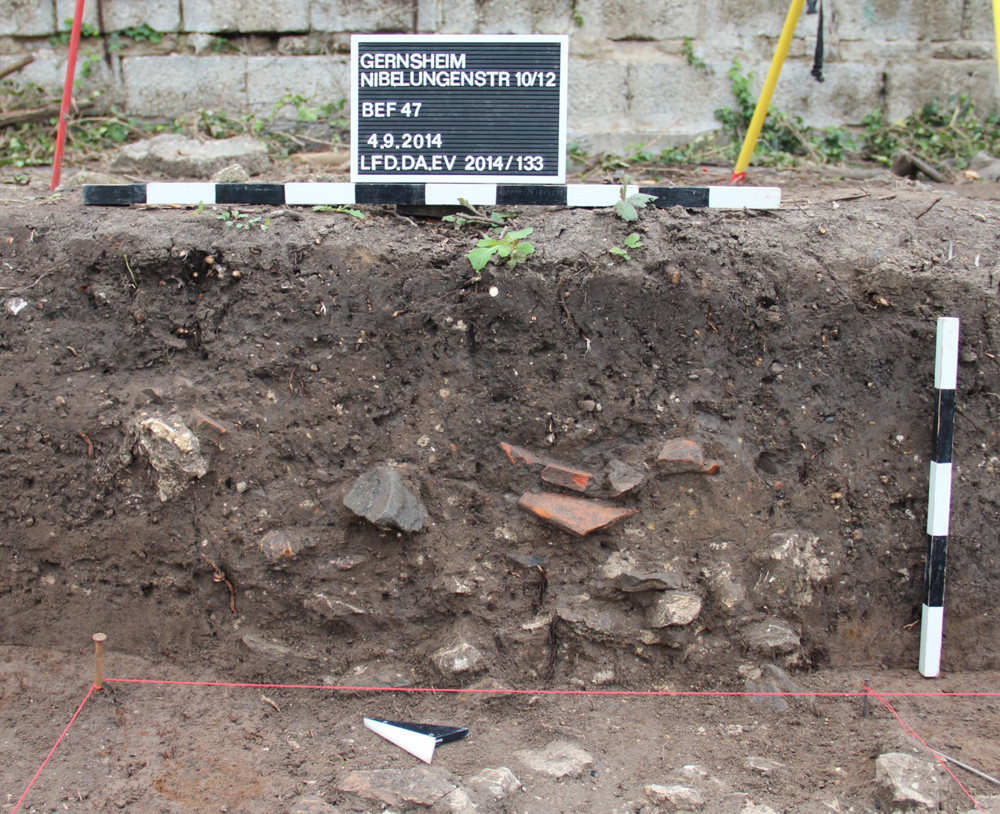
A cross-section view of the stone building formation reveals how shallowly Roman history is buried. The foundation is only about 12 inches (30 centimeters) below the current ground level. Many Roman-era finds have been lost to modern development in Gernsheim. [Read full story]
Get the world’s most fascinating discoveries delivered straight to your inbox.
Watch over Gernsheim
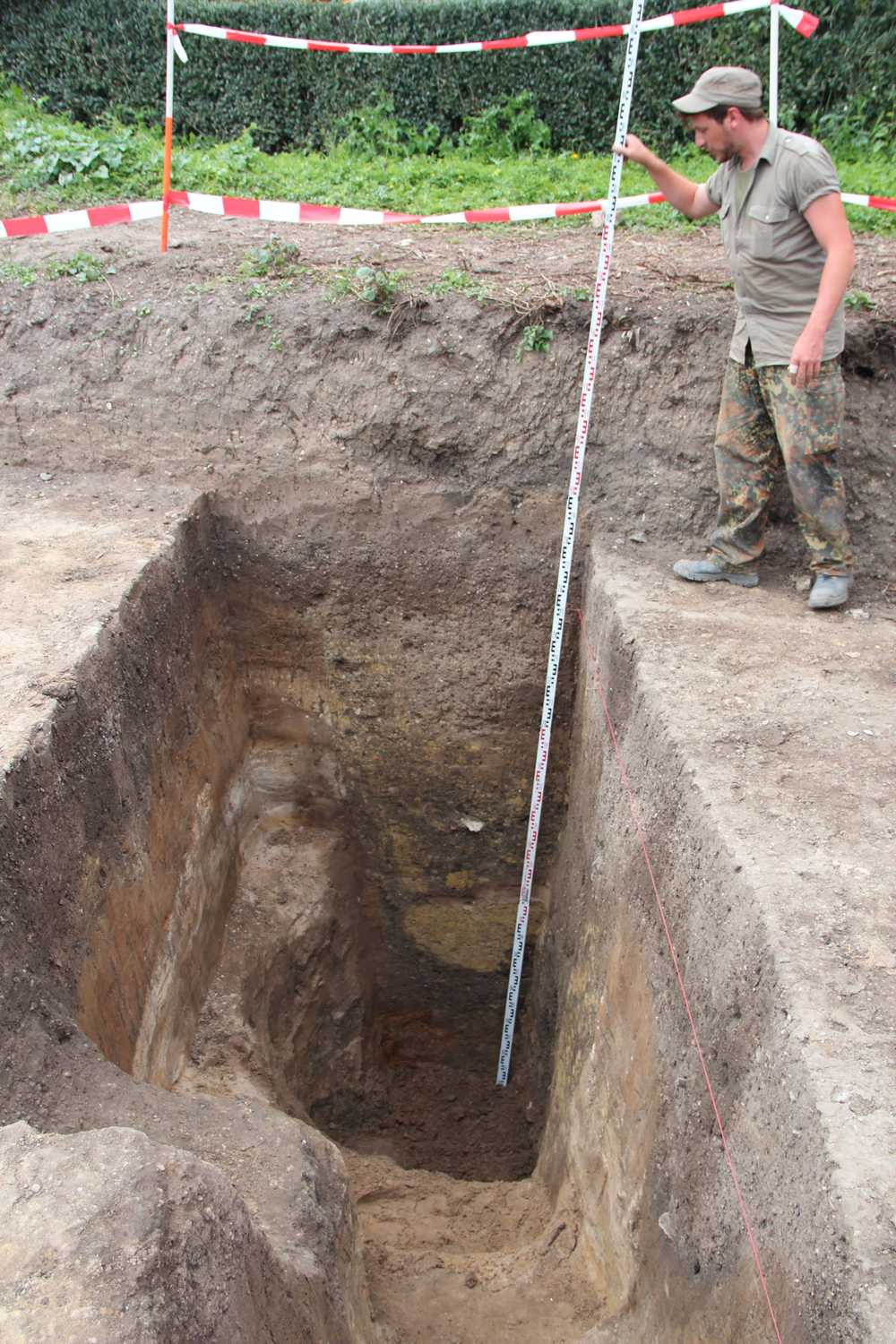
A foundation hole for a wooden defensive tower where Roman soldiers once kept watch over what is now Gernsheim. Archaeologists found this post hole about 13 feet (4 meters) below the surface. The researchers hope that they will find wooden fragments from the defensive tower itself, which would be useful for carbon-dating the structure. [Read full story]
Roman Legion
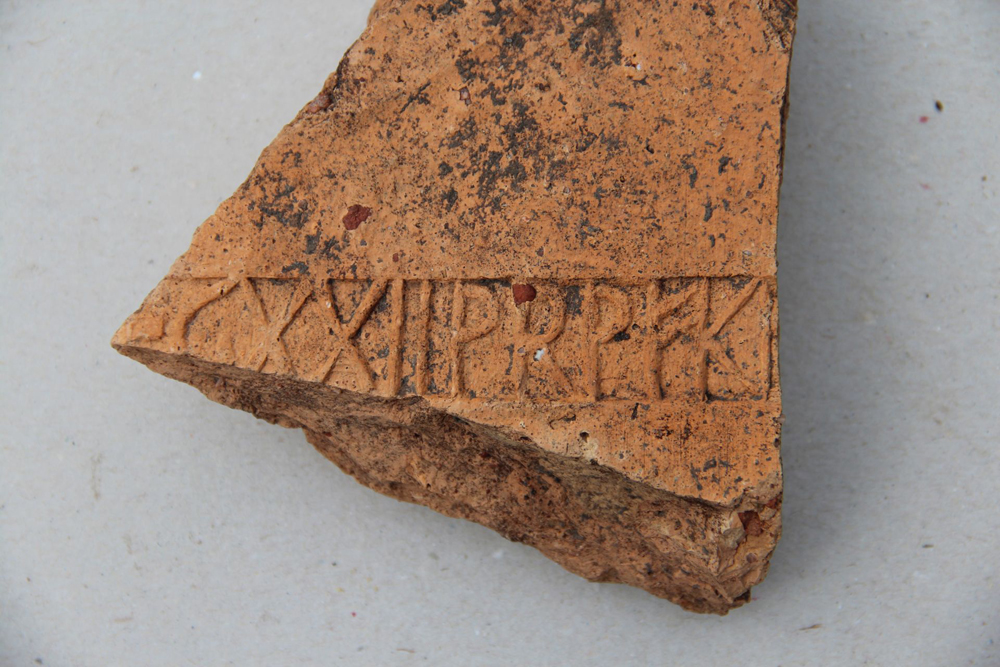
A brick fragment stamped with the sign of the 22nd Roman Legion, an elite unite from the late first century, A.D. with the motto "Primigenia Pia Fidelis." Members of this legion were installed in military camps throughout upper Germany, protecting the Roman Empire's borders. [Read full story]
Cavalry ornament
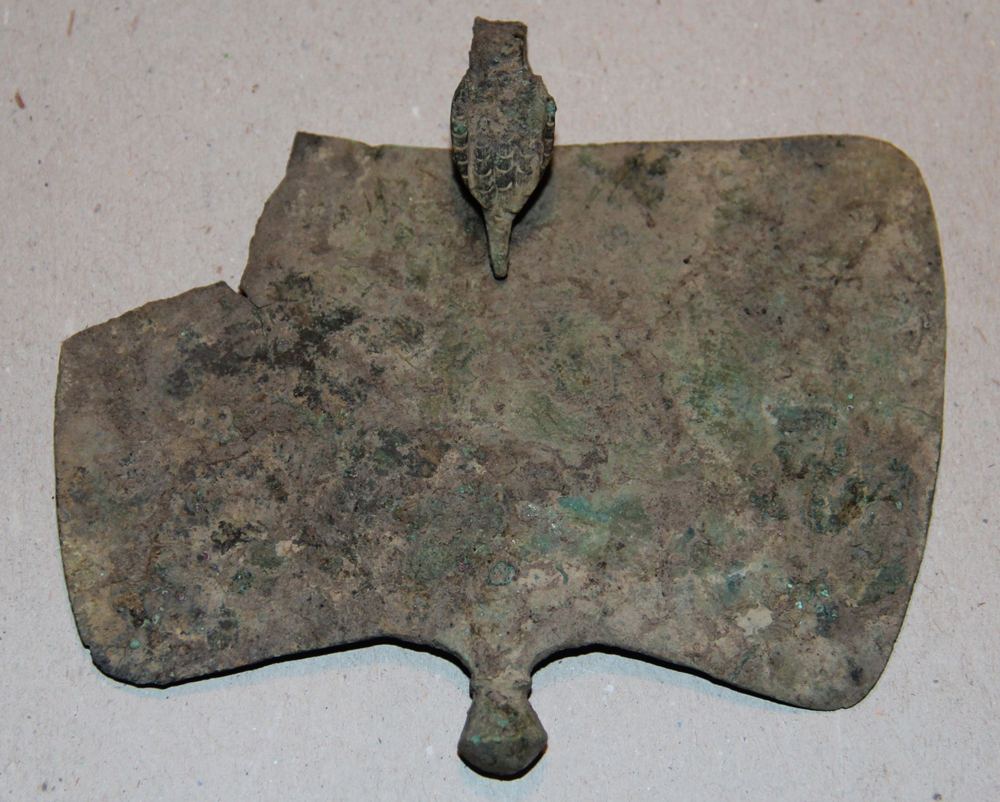
Measuring about 4.7 inches (12 centimeters) long and 3.1 inches (8 centimeters) tall, this bronze ornament is a horse harness pendant used to decorate the mounts of Roman cavalrymen. The discovery of this pendant in Gernsheim strongly suggests that some or even all of the soldiers stationed at the fort were cavalry. [Read full story]

Stephanie Pappas is a contributing writer for Live Science, covering topics ranging from geoscience to archaeology to the human brain and behavior. She was previously a senior writer for Live Science but is now a freelancer based in Denver, Colorado, and regularly contributes to Scientific American and The Monitor, the monthly magazine of the American Psychological Association. Stephanie received a bachelor's degree in psychology from the University of South Carolina and a graduate certificate in science communication from the University of California, Santa Cruz.


